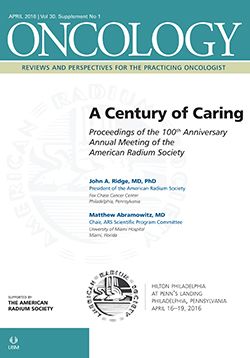(S001) Prognostic Value of Pretreatment Serum Inflammatory Markers in Patients Receiving Radiation Therapy for Oropharyngeal Cancer
Systemic inflammatory markers are independent prognostic factors for survival in oropharyngeal cancer patients treated with radiation therapy. Future investigations to validate the identified cut points and to develop risk-adaptive treatment strategies are needed.
Aasheesh Kanwar, Amos J. Hayes, MPH, Chloe French, Abdallah Mohamed, G.B. Gunn, MD, Beth M. Beadle, MD, PhD, Jack Phan, MD, PhD, Heath Skinner, MD, PhD, Steven Y. Lai, MD, PhD, Merrill Kies, MD, Randal Weber, MD, William Morrison, MD, David Rosenthal, MD, Adam S. Garden, MD, Clifton D. Fuller, MD, PhD; Texas Tech University Health Sciences Center School of Medicine; University of North Texas Health Science Center; UT at Houston Medical School; UT MD Anderson Cancer Center
OBJECTIVES: To assess the prognostic value of pretreatment systemic inflammatory markers-namely, neutrophil-to-lymphocyte ratio (NLR) and platelet-to-lymphocyte ratio (PLR)-in risk stratification of patients receiving definitive radiation therapy (RT) for oropharyngeal cancer (OPC).
METHODS: Patients who had pre-RT white blood cell (WBC) and platelet counts collected within 6 weeks before RT were included. NLR and PLR were calculated by dividing absolute neutrophil and platelet counts, respectively, by absolute lymphocyte counts. Recursive partitioning analysis (RPA) was performed to find specific cut points associated with mortality for NLR and PLR. Kaplan-Meier and log-rank tests were used to evaluate overall survival (OS). Univariate and multivariate analyses were conducted using the following variables: age, smoking, T/N stage, sex, chemotherapy, human papilloma virus (HPV) status, and pre-RT NLR and PLR; a Cox proportional hazards model was used to identify a relationship between OS and pre-RT NLR and PLR.
RESULTS: A total of 629 patients were analyzed, with a median follow-up of 87 months. The majority had stage IVa disease (65%), and 420 patients (67%) were treated using concurrent chemoradiotherapy (chemoRT). HPV status was available for 140 patients (22%). RPA yielded an NLR cut point of 4.3 and a PLR cut point of 183. Univariate analysis at these thresholds showed a statistically significant association between NLR ≥ 4.3 and mortality (hazard ratio [HR], 1.87 [95% CI, 1.39–2.48]; P < .0001). A similar association between PLR ≥ 183 and death was encountered (HR, 1.73 [95% CI, 1.30–2.29]; P = .0002). The 5-year OS was significantly better for patients with NLR < 4.3 (n = 276) compared with NLR ≥ 4.3 (82% vs 65%; P < .0001) and PLR < 183 (n = 235) vs PLR ≥ 183 (82% vs 68%; P < .0001). Patients with elevations of both NLR and PLR fared worst compared with those without either (83% vs 65%; P < .0001). NLR and PLR did not remain significant when HPV status was considered in the multivariate analysis.
CONCLUSION: Systemic inflammatory markers are independent prognostic factors for survival in OPC patients treated with RT. Future investigations to validate the identified cut points and to develop risk-adaptive treatment strategies are needed.
Proceedings of the 98th Annual Meeting of the American Radium Society - americanradiumsociety.org
